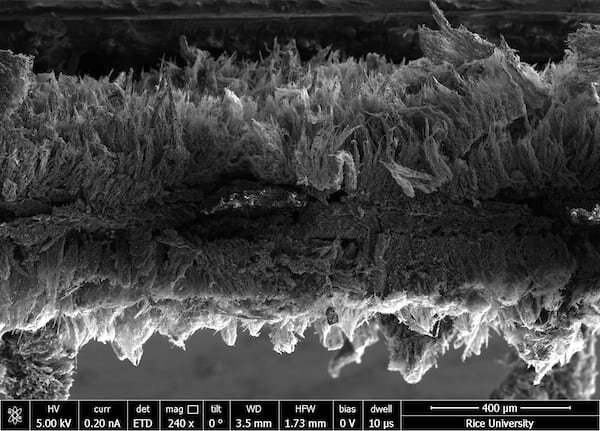Bacteria trapped – and terminated – by graphene filter
Date: 7.10.2019
Airborne bacteria may see what looks like a comfy shag carpet on which to settle. But it's a trap. Rice University scientists have transformed their laser-induced graphene (LIG) into self-sterilizing filters that grab pathogens out of the air and kill them with small pulses of electricity.
 The flexible filter developed by the Rice lab of chemist James Tour may be of special interest to hospitals. According to the Centers for Disease Control and Prevention, patients have a 1-in-31 chance of acquiring a potentially antibiotic-resistant infection during hospitalization.
The flexible filter developed by the Rice lab of chemist James Tour may be of special interest to hospitals. According to the Centers for Disease Control and Prevention, patients have a 1-in-31 chance of acquiring a potentially antibiotic-resistant infection during hospitalization.
The device described in the American Chemical Society journal ACS Nano captures bacteria, fungi, spores, prions, endotoxins and other biological contaminants carried by droplets, aerosols and particulate matter.
The filter then prevents the microbes and other contaminants from proliferating by periodically heating up to 350 degrees Celsius (662 degrees Fahrenheit), enough to obliterate pathogens and their toxic byproducts. The filter requires little power, and heats and cools within seconds.
LIG is a conductive foam of pure, atomically thin carbon sheets synthesized through heating the surface of a common polyimide sheet with an industrial laser cutter. The process discovered by Tour's lab in 2014 has led to a range of applications for electronics, triboelectric nanogenerators, composites, electrocatalysis and even art.























